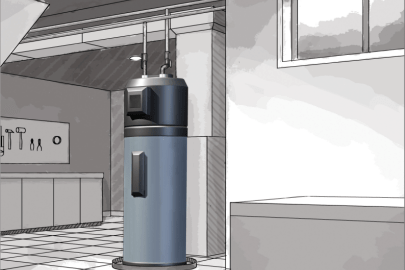The article which follows relating to Water Heater Maintenance Tips You Can't Afford to Forget is rather enlightening. You should check this stuff out.

Warm water is vital for everyday comfort, whether it's for a revitalizing shower or cleaning meals. To ensure your warm water system runs effectively and lasts longer, regular upkeep is crucial. This short article provides functional suggestions and insights on how to keep your home's hot water system to avoid interruptions and costly repair services.
Introduction
Keeping your home's warm water system may appear difficult, but with a couple of simple actions, you can ensure it operates smoothly for several years to find. This overview covers everything from recognizing your hot water system to DIY upkeep suggestions and knowing when to employ professional assistance.
Importance of Preserving Your Hot Water System
Normal maintenance not just extends the life expectancy of your warm water system but also ensures it operates effectively. Disregarding maintenance can result in lowered efficiency, greater energy costs, and even early failing of the system.
Indications Your Warm Water System Requirements Upkeep
Recognizing when your hot water system needs interest can prevent significant concerns. Look out for indications such as inconsistent water temperature, odd sounds from the heater, or rusty water.
Comprehending Your Hot Water System
Prior to diving into upkeep tasks, it's practical to recognize the standard elements of your warm water system. Typically, this includes the hot water heater itself, pipes, anode poles, and temperature controls.
Monthly Maintenance Tasks
Routine month-to-month checks can aid catch minor concerns prior to they escalate.
Flushing the Water Heater
Flushing your water heater eliminates debris build-up, improving efficiency and prolonging its life.
Checking and Replacing Anode Rods
Anode rods stop deterioration inside the tank. Evaluating and replacing them when worn out is vital.
Examining and Changing Temperature Level Setups
Readjusting the temperature level setups ensures optimal efficiency and safety and security.
Do It Yourself Tips for Upkeep
You can do several maintenance tasks on your own to keep your hot water system in top problem.
Looking for Leakages
On a regular basis check pipelines and links for leakages, as these can result in water damage and greater costs.
Checking Pressure Alleviation Valves
Checking the pressure relief valve guarantees it operates properly and avoids excessive stress accumulation.
Shielding Pipelines
Protecting hot water pipelines minimizes warmth loss and can conserve energy.
When to Call a Specialist
While DIY maintenance is beneficial, some concerns need specialist proficiency.
Complicated Issues Requiring Specialist Assistance
Examples consist of significant leakages, electrical issues, or if your water heater is continually underperforming.
Regular Specialist Maintenance Benefits
Specialist upkeep can include thorough examinations, tune-ups, and making sure conformity with security criteria.
Final thought
Regular maintenance of your home's warm water system is necessary for performance, durability, and cost financial savings. By following these pointers and understanding when to look for expert assistance, you can guarantee a reliable supply of warm water without unexpected interruptions.
How to Maintain an Instant Hot Water Heater
Before tinkering with your hot water heater, make sure that it’s not powered on. You also have to turn off the main circuit breaker and shut off the main gas line to prevent accidents. Also turn off the water valves connected to your unit to prevent water from flowing into and out of the appliance. 2. When you’re done, you have to detach the purge valves’ caps. These look like the letter “T†and are situated on either side of the water valves. Doing so will release any pressure that has accumulated inside the valves while at the same time avoid hot water from shooting out and burning your skin. 3. When the purge valves’ caps are removed, you have to connect your hosing lines to the valves. Your unit should have come with three hoses but if it didn’t, you can purchase these things from any hardware or home repair shops. You can also get them from retail stores that sell water heating systems. Read the user’s manual and follow it to complete this task properly. When the hosing lines are connected, open the purge port’s valves. 4. You should never use harsh chemical cleaners or solutions when cleaning your unit. Make use of white vinegar instead. It should be undiluted and you’ll probably use about 2 gallons. 5. Now flush your water heater. This task should probably take about 40 minutes. We can’t give you specific directions for this because the procedure is carried out depending on the type, model and brand of your heater. With that being said, refer to the user’s manual. 6. When you’re done draining the unit, you have to turn off the purge port valves again. Remove the hosing lines that you earlier installed on each of the water valves. Put the valve caps (purge port) back in their respective places and be very careful so as not to damage the rubber discs that are found inside these caps. 7. Now that everything’s back in place, check your user’s manual again to find out how to reactivate your water heating system. 8. Once it is working, turn one of your hot water faucets on just to let air pass through the heater’s water supply pipes. Leave the tap on until water flows smoothly out of it. https://www.orrplumbing.com/blog/2014/september/how-to-maintain-an-instant-hot-water-heater/

Do you enjoy reading up on Water Heater Maintenance Tips You Can't Afford to Forget? Try leaving a comment further down. We will be happy to listen to your ideas about this blog posting. In hopes to see you back again in the near future. Sharing is nice. You just don't know, you could be helping someone out. Bless you for being here. Please come by our site back soon.
Book Your Service